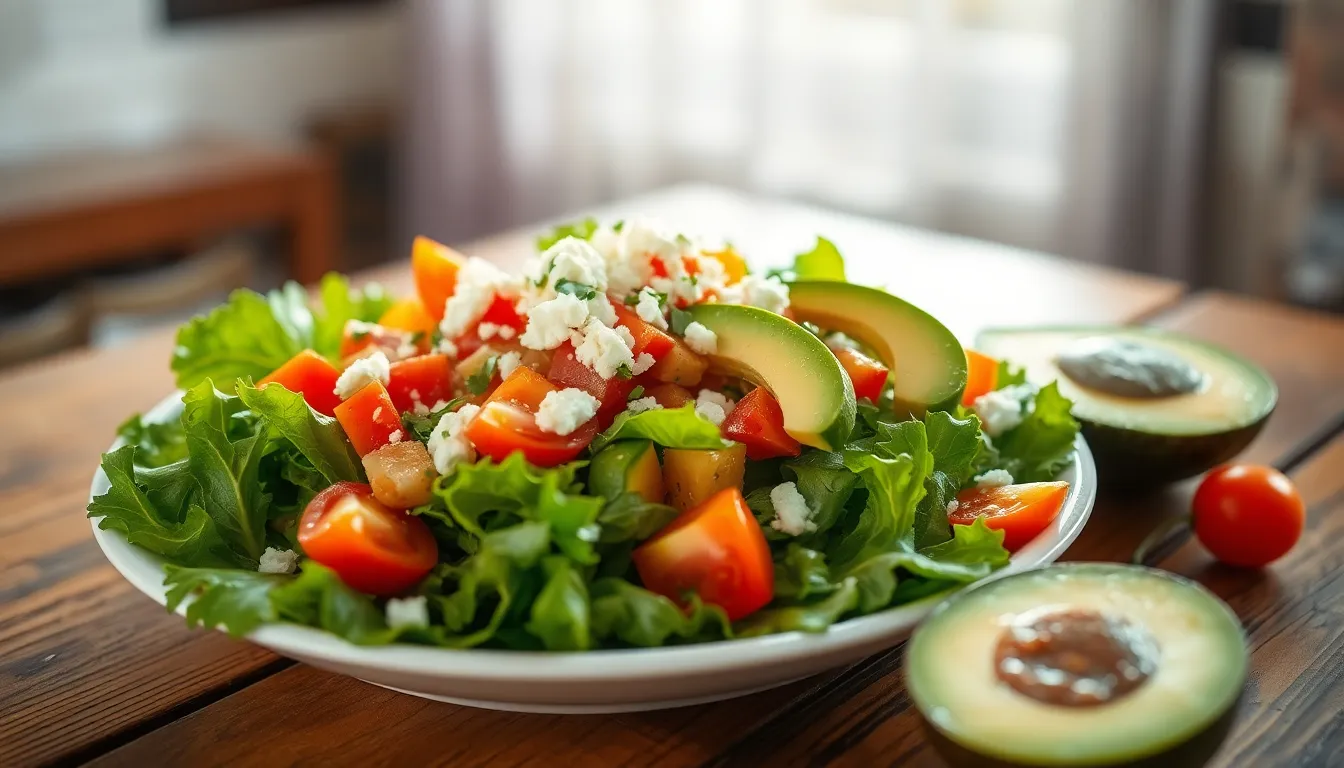Queso fresco, the delightful crumbly cheese that’s a staple in Mexican cuisine, isn’t just a topping for your tacos or a star in your salads. It’s a nutritional powerhouse hiding in plain sight. Packed with protein and calcium, this creamy delight is like a superhero in the dairy aisle, ready to save your meals from the clutches of blandness.
But wait, there’s more! This cheese is low in fat, making it a guilt-free indulgence. Whether it’s sprinkled on enchiladas or melted into a savory dip, queso fresco adds flavor without packing on the calories. Dive into the world of queso fresco nutrition and discover how this cheese can elevate your dishes while keeping your diet on track. After all, who said healthy eating can’t be delicious?
Queso Fresco Nutrition
Queso fresco stands out as a popular cheese in Mexican cuisine, known for its fresh and crumbly texture. This cheese contains essential nutrients, which contribute to its appeal as a versatile ingredient. Protein content reaches approximately 6 grams per ounce, making it a solid choice for those aiming to increase protein intake. Additionally, its calcium content provides about 12% of the daily recommended intake, supporting bone health.
Low in fat, queso fresco typically contains around 6 grams of fat per ounce, making it a favorable option in a balanced diet. It offers a mild flavor profile that complements various dishes, enhancing both taste and nutrition. This cheese can find its place in salads, enchiladas, or even as a topping for tacos.
Queso fresco also serves as a source of essential vitamins, including A and B12, contributing to overall health. Serving this cheese in moderation aligns well with dietary goals while adding a creamy element to meals. Chefs and home cooks alike appreciate how easily queso fresco crumbles, allowing for straightforward incorporation into recipes.
Health-conscious individuals benefit from queso fresco’s versatility. Its capabilities extend beyond traditional applications, as it pairs well with fruits and vegetables, offering new culinary experiences. Knowing its nutritional value encourages experimentation with this cheese, encouraging people to explore new flavors in their cooking.
Nutritional Profile of Queso Fresco

Queso fresco offers a rich nutritional profile that enhances its appeal. This cheese delivers essential nutrients beneficial for health.
Protein Content
Protein content in queso fresco is notable, with approximately 6 grams per ounce. This level supports muscle building and repair. Incorporating protein-rich foods can lead to increased satiety, aiding in weight management. Regular consumption contributes to daily nutritional needs, particularly for those seeking high-protein diets. It also serves as a valuable option for vegetarians looking to boost protein intake.
Fat Content
Fat content in queso fresco stands around 6 grams per ounce, keeping it relatively low compared to many other cheeses. As a result, it fits effectively into a balanced diet. Managing dietary fat is crucial for maintaining heart health, and queso fresco provides a good alternative to higher-fat options. The cheese’s fat content contributes to flavor without overwhelming calorie intake, ensuring meals remain enjoyable yet nutritious.
Vitamins and Minerals
Vitamins and minerals found in queso fresco contribute to its nutritional benefits. This cheese supplies essential calcium, about 12% of the daily recommended intake per ounce, promoting bone health. Additionally, vitamins A and B12 present in queso fresco support immune function and energy production. These nutrients enhance overall well-being, making the cheese a health-conscious choice for a variety of dishes. Using queso fresco can effectively enrich the nutrient density of meals.
Health Benefits of Queso Fresco
Queso fresco offers numerous health benefits that support overall wellness. This cheese, rich in essential nutrients, suits various diets and enhances meal nutrition.
Bone Health
Calcium plays a crucial role in maintaining strong bones, and queso fresco provides around 12% of the daily calcium requirement per ounce. Regular consumption contributes to improved bone density and reduces the risk of osteoporosis, especially in older adults. Vitamin A in queso fresco further supports bone health, enabling the body to utilize calcium effectively. Those seeking ways to strengthen their bones can benefit from incorporating this cheese into their meals. Salads, enchiladas, and tacos can easily include queso fresco, enhancing both flavor and nutritional value.
Muscle Maintenance
Protein is vital for muscle maintenance, and queso fresco delivers approximately 6 grams per ounce. This macronutrient aids in muscle repair after physical activity, making it a favorable addition to post-workout meals. Incorporating queso fresco into daily diets helps meet protein needs for enhanced muscle growth and recovery. Its relatively low fat content also aligns with healthy eating habits, making it suitable for those managing their weight. Including this cheese in dishes like quesadillas or mixed with vegetables can provide a satisfying source of protein for anyone pursuing fitness goals.
Culinary Uses of Queso Fresco
Queso fresco enhances numerous dishes, showcasing its versatility in both traditional and modern cooking. This cheese offers a mild flavor that complements an array of ingredients.
Traditional Dishes
Tacos frequently feature queso fresco as a topping, providing a creamy texture that balances spicy fillings. Enchiladas often benefit from the addition of this cheese, amplifying flavor and nutrition. Salads with queso fresco capture a delightful combination of freshness and richness. Pozole, a traditional Mexican soup, gains depth from crumbled queso fresco, making each bite more satisfying. Additionally, quesadillas incorporate this cheese, resulting in a gooey, flavorful experience.
Modern Cuisine
Culinary creativity flourishes with queso fresco in contemporary recipes. Avocado toast topped with queso fresco elevates this classic dish, adding an unexpected twist. Grain bowls become more nutritious when sprinkled with this cheese, emphasizing both flavor and health. Pizza recipes leverage queso fresco for a unique, savory dimension, enhancing the overall taste. Queso fresco pairs wonderfully with fruits like watermelon, creating refreshing salads or appetizers. Moreover, its crumbly texture works perfectly in frittatas, enriching breakfast options.
Conclusion
Queso fresco stands out as a nutritious cheese that not only enhances the flavor of various dishes but also contributes to a balanced diet. Its impressive protein and calcium content supports health goals while its low fat makes it a heart-friendly option. This cheese’s versatility allows for creative culinary applications across traditional and modern recipes. By incorporating queso fresco into meals, individuals can enjoy a delicious ingredient that enriches both nutrition and taste, making it an excellent choice for everyday cooking. Embracing queso fresco can lead to exciting flavor combinations and a healthier lifestyle.

